Victorian kitchen design marries ornate historical detail with modern functionality, creating spaces that feel both timeless and livable. From the intricate woodwork of custom cabinetry to the gentle patina of brass fixtures, these kitchens tell stories of a bygone era while accommodating today’s culinary needs. Key elements include decorative moldings, patterned wallpapers, and period-appropriate fixtures like clawfoot sinks and freestanding ranges. Color palettes often draw on earthy jewel tones or soft pastels, complemented by materials such as Carrara marble and checkerboard flooring. Open shelving showcases vintage crockery, while tin ceilings and stained-glass windows add unexpected texture and light. Whether in a grand urban townhouse or a cozy country cottage, these 20 ideas provide a roadmap to crafting a Victorian-inspired kitchen that balances beauty with practicality.
1. Ornate Cabinetry and Carvings
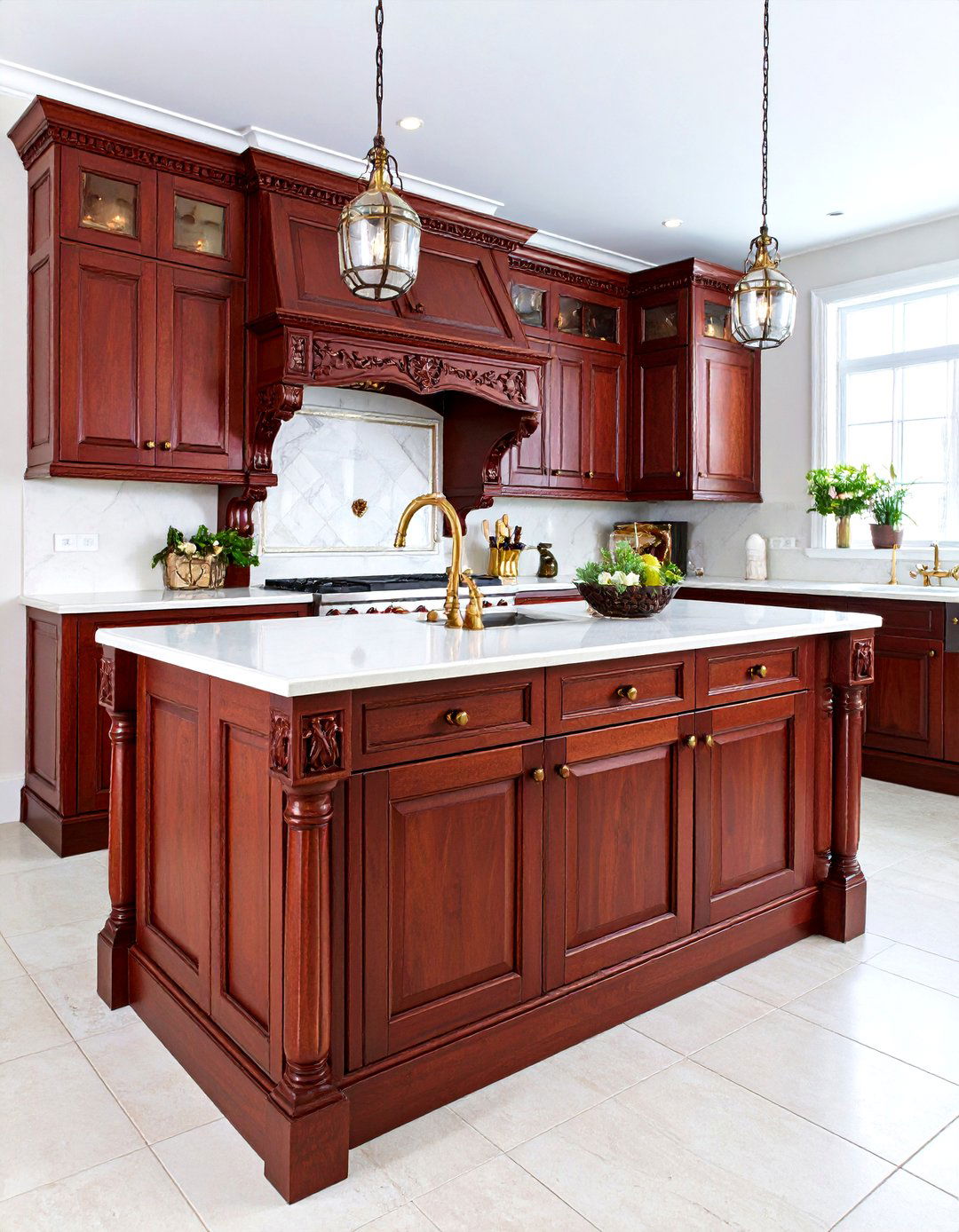
Hand-crafted cabinetry featuring pilasters, fluted columns, and acanthus-leaf carvings creates the defining visual of a Victorian kitchen. These cabinets often boast raised-panel doors, robust moldings, and custom corbels—details that reflect 19th-century craftsmanship. Rich woods like mahogany and oak were traditional, but modern interpretations may use painted finishes in deep greens or blues to echo period palettes. Beyond aesthetics, deep drawers and built-in spice racks offer contemporary storage utility without sacrificing authenticity. The result is a kitchen where every cabinet functions as both storage and decorative focal point.
2. Patterned Wallpaper
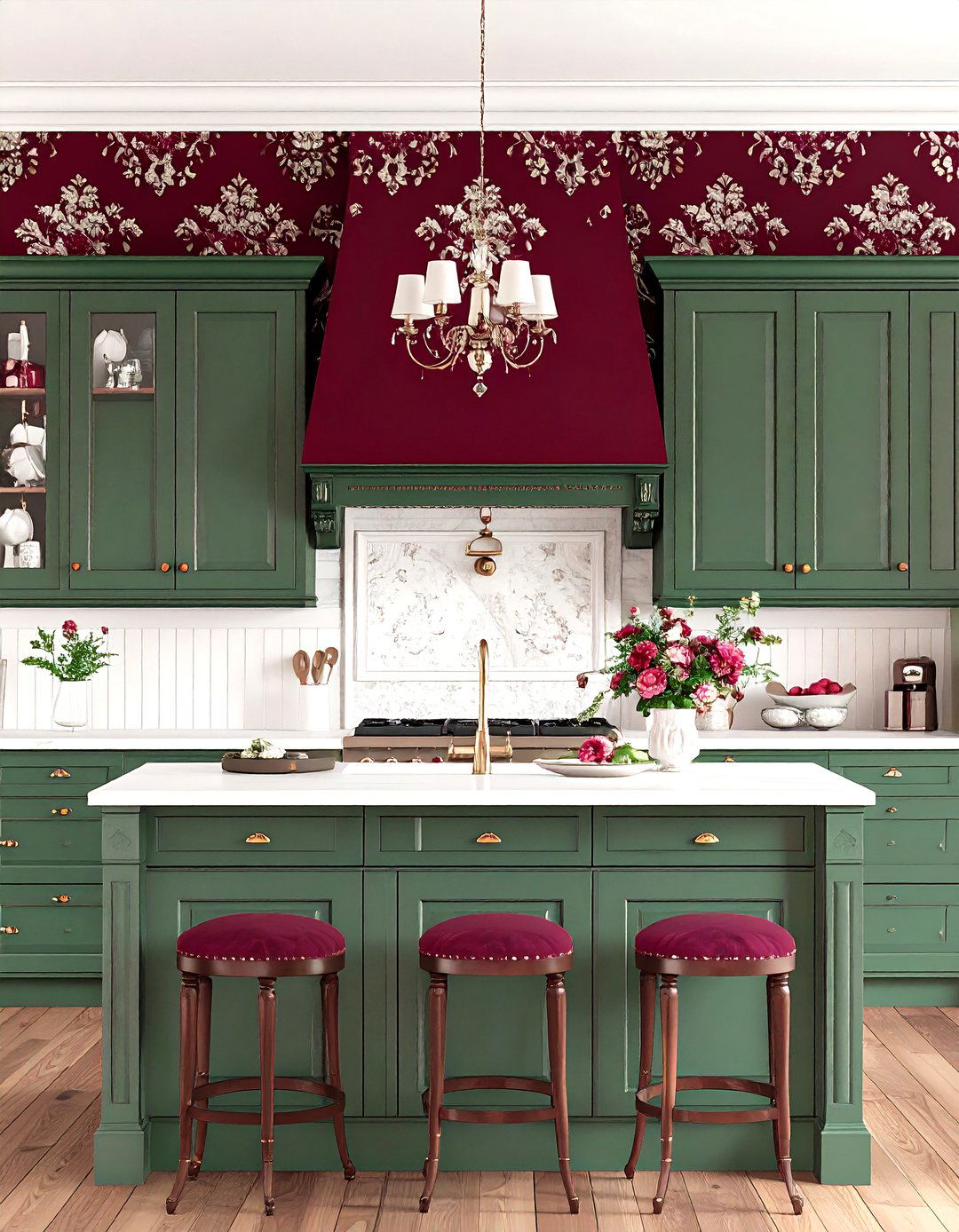
Dimensional wallpapers with repeating floral or damask motifs bring Victorian walls to life. Wallpapers in rich colors—burgundy, forest green, or mustard—layer visual interest and pair beautifully with dark cabinetry. In kitchens, choose washable, vinyl-backed papers for durability around heat and moisture, and limit their use to an accent wall or ceiling area to prevent overwhelm. Floral patterns echo period design, while geometric or trellis prints can modernize the look. Accenting wallpaper with beadboard wainscoting below balances pattern with clean surfaces.
3. Tin Ceilings
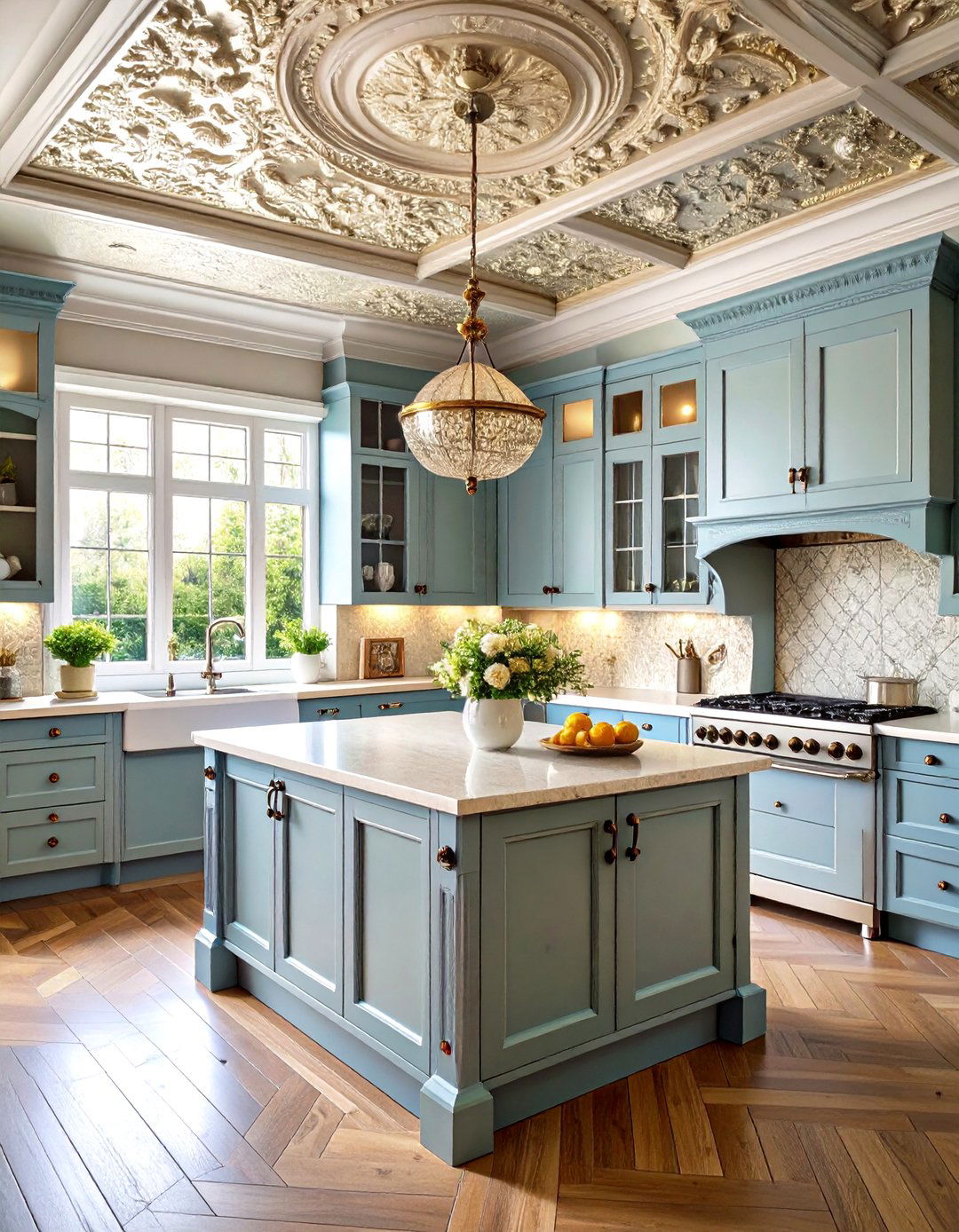
Pressed-tin ceilings were both decorative and fire-resistant in Victorian homes. Today, tin panels painted in metallic or matte finishes add historical charm overhead. Patterns range from simple grids to elaborate filigree and medallions. Installing tin panels on the ceiling—or even as an accent backsplash—draws the eye upward, enhancing perceived height and texture. For a modern twist, consider painting tins in contrasting hues (e.g., aged copper against a white ceiling) to highlight relief patterns. Easy-install panels make retrofitting historic styles achievable in contemporary renovations.
4. Vintage Lighting Fixtures

Lighting in Victorian kitchens favored glass shades and intricate metalwork. Restored or reproduction pendants with opal glass globes, brass or bronze frames, and chain suspensions evoke period authenticity. Wall-mounted sconces with frosted glass shades flank windows or open shelving, casting a warm glow. For island lighting, cluster multiple small pendants at varying heights to mimic old-world gas-lighter configurations. Retro-style filament bulbs (LED versions) complete the look, balancing ambiance with energy efficiency. Such fixtures serve as sculptural elements that anchor the kitchen’s historical narrative.
5. Carrara Marble Countertops

White Carrara marble, prized in the 19th century, brings luminous veining and cool tones to kitchen surfaces. Its polished finish contrasts beautifully with dark cabinetry and patterned floors. While genuine marble requires more maintenance, honed surfaces hide etches, and modern sealants improve resilience against stains. Marble also extends to fireplace mantels or decorative shelf brackets for a cohesive scheme. When budget or upkeep is a concern, quartz slabs with marble-look veining offer scratch resistance and lower maintenance while maintaining period-appropriate aesthetics.
6. Checkerboard Flooring
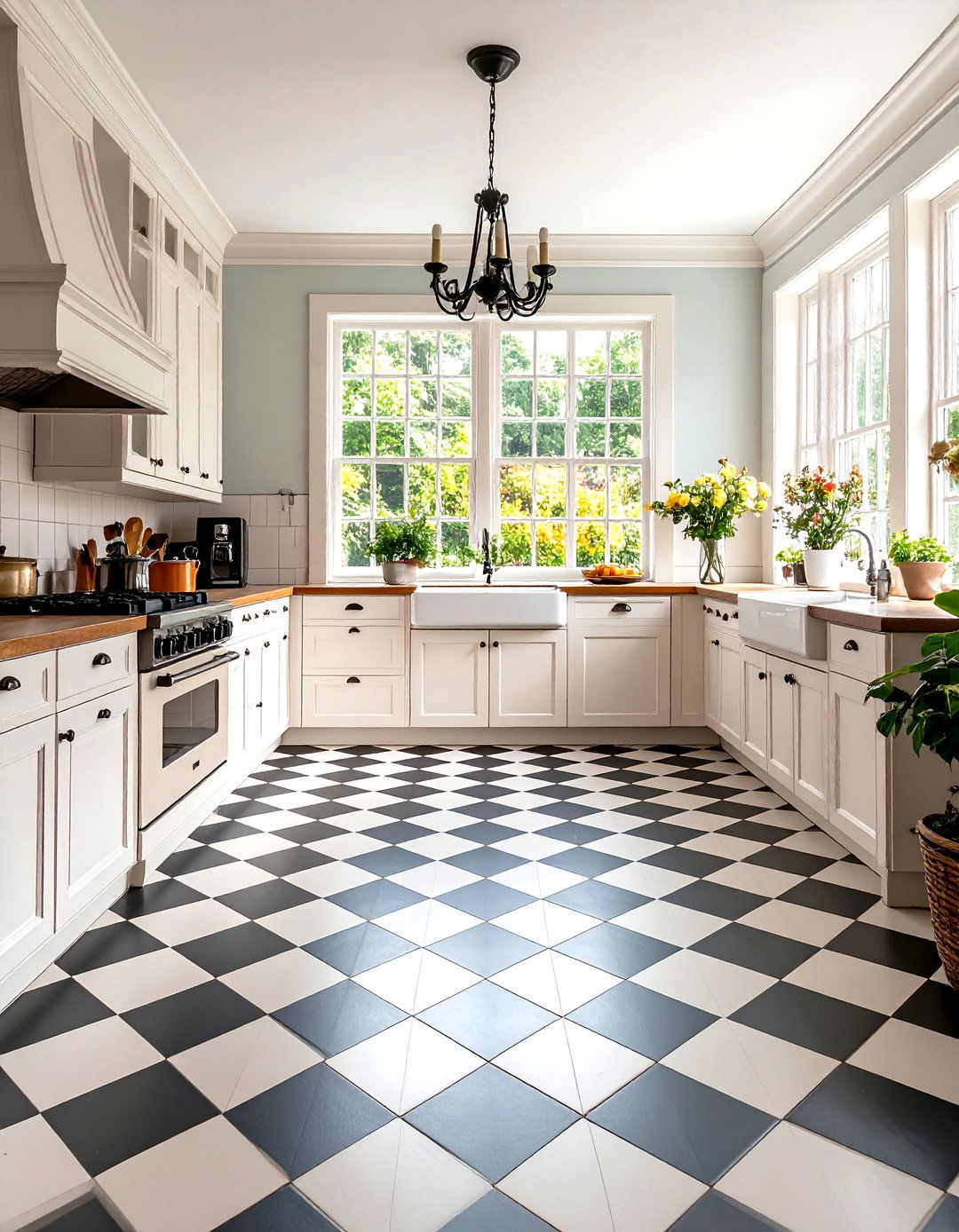
Black-and-white checkerboard floors instantly evoke Victorian elegance and lend a graphic base to kitchens. Classic square tiles in ceramic or porcelain are laid in alternating patterns, visually anchoring the room. For a subtler take, choose muted color combinations—ecru and gray—or smaller hexagonal mosaics in a checker effect. The durable tile handles heavy foot traffic and periodic spills, while grout color can be customized to emphasize or soften the pattern. Checkerboard flooring pairs especially well with simple white cabinetry and vintage rugs for added warmth.
7. Open Shelving with Decorative Crockery
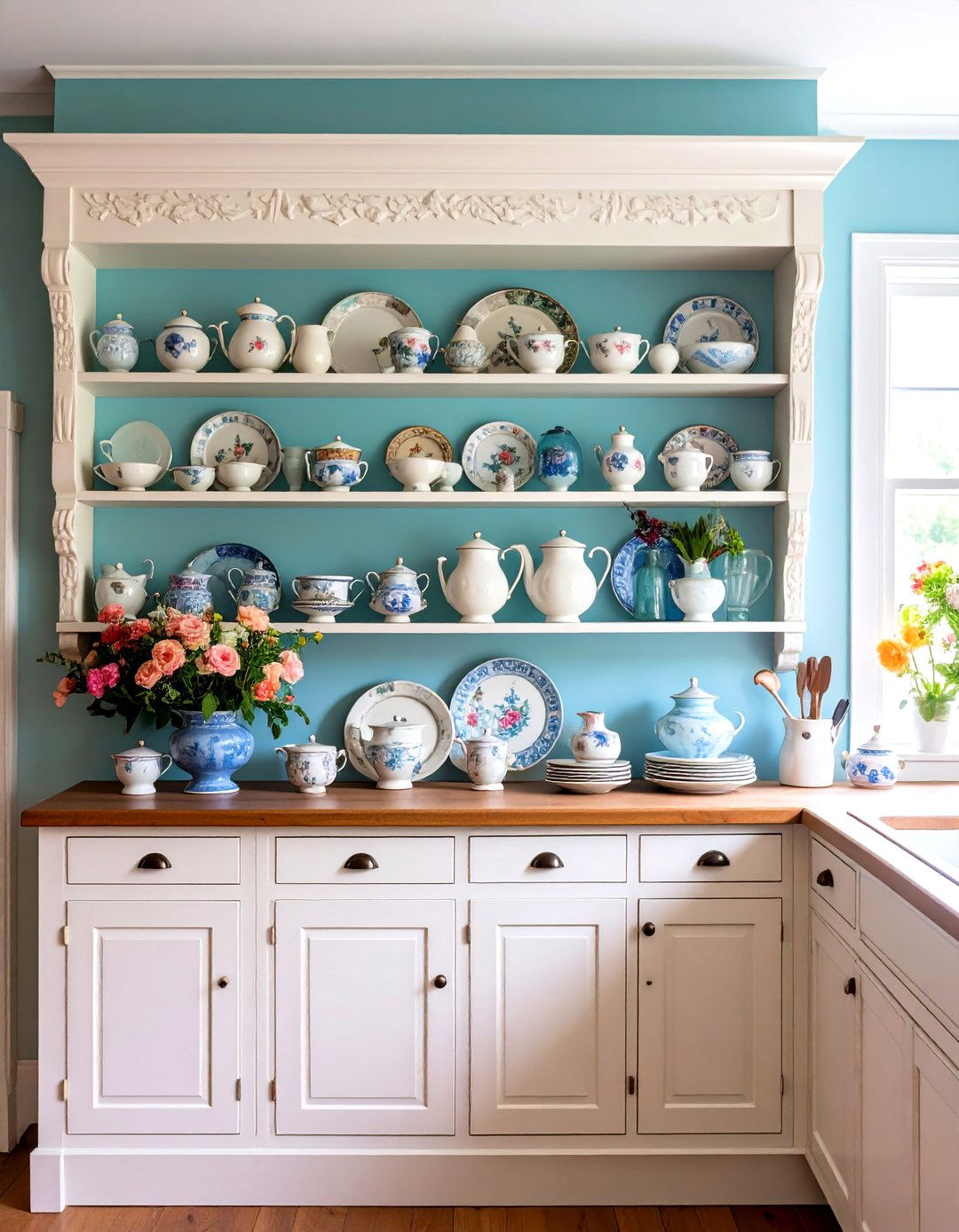
Victorians displayed china and glassware atop open shelves as both storage and décor. Recreate this by installing sturdy wooden or metal shelves supported by decorative brackets or corbels. Arrange collections of porcelain pitchers, transferware plates, and color-toned glass jars in rhythmic groupings. The open display enlivens walls and keeps everyday items within easy reach. To prevent dust buildup, limit shelving to one or two walls and avoid extending shelves to the ceiling. Balance open displays with closed cabinetry below for hidden storage.
8. Butler’s Pantry Integration
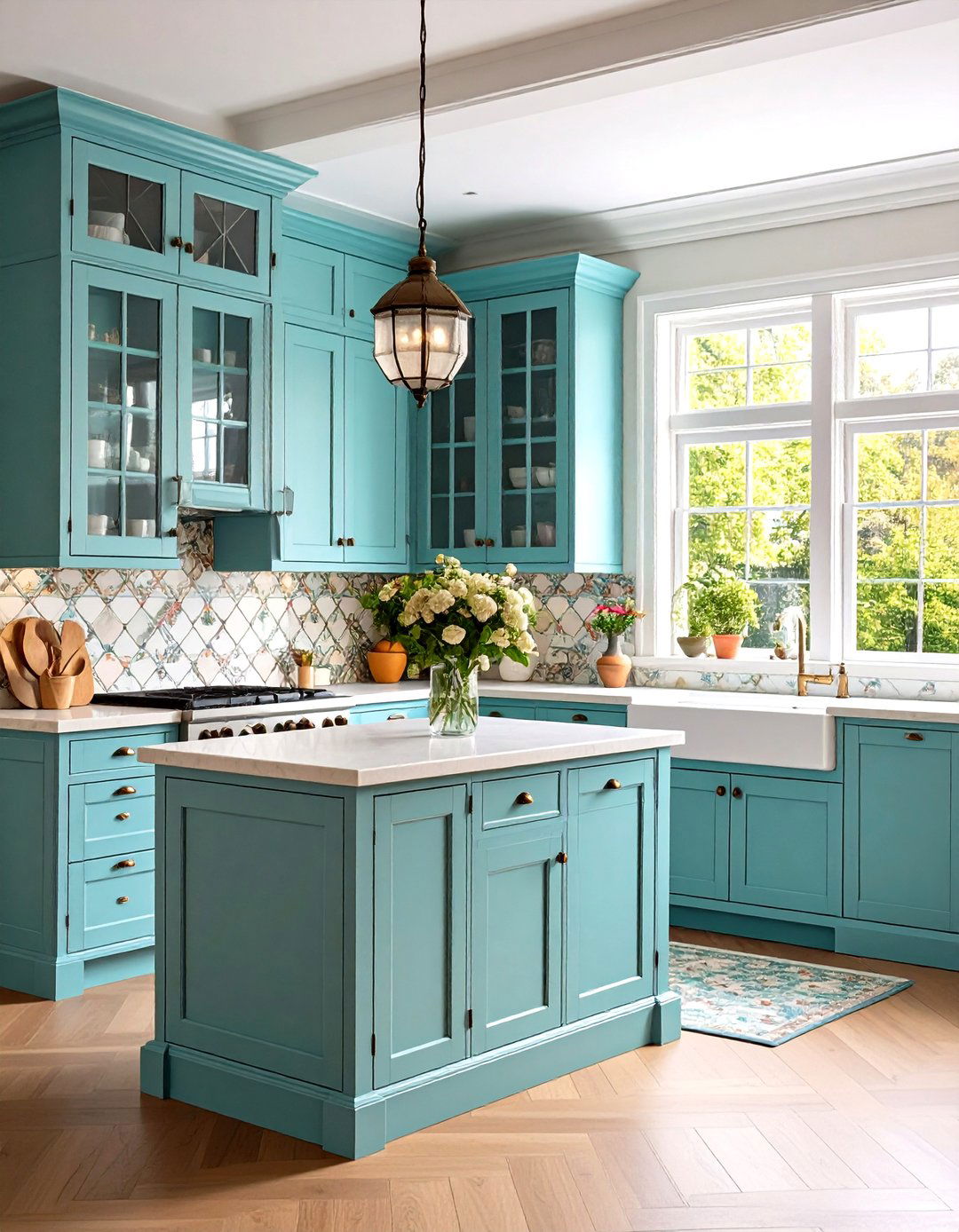
In larger homes, a separate butler’s pantry housed silver, serveware, and food prep. Modern kitchens can echo this by carving out a niche with glass-front cabinets, counter space, and small sink. Use leaded-glass doors or mullions to maintain light while concealing clutter. Decorative plate rails or wall-mounted spice racks further evoke period functionality. A classic butler’s pantry provides overflow storage and staging area for entertaining, preserving the kitchen’s formal decorum even during busy gatherings.
9. Freestanding Cast-Iron Ranges
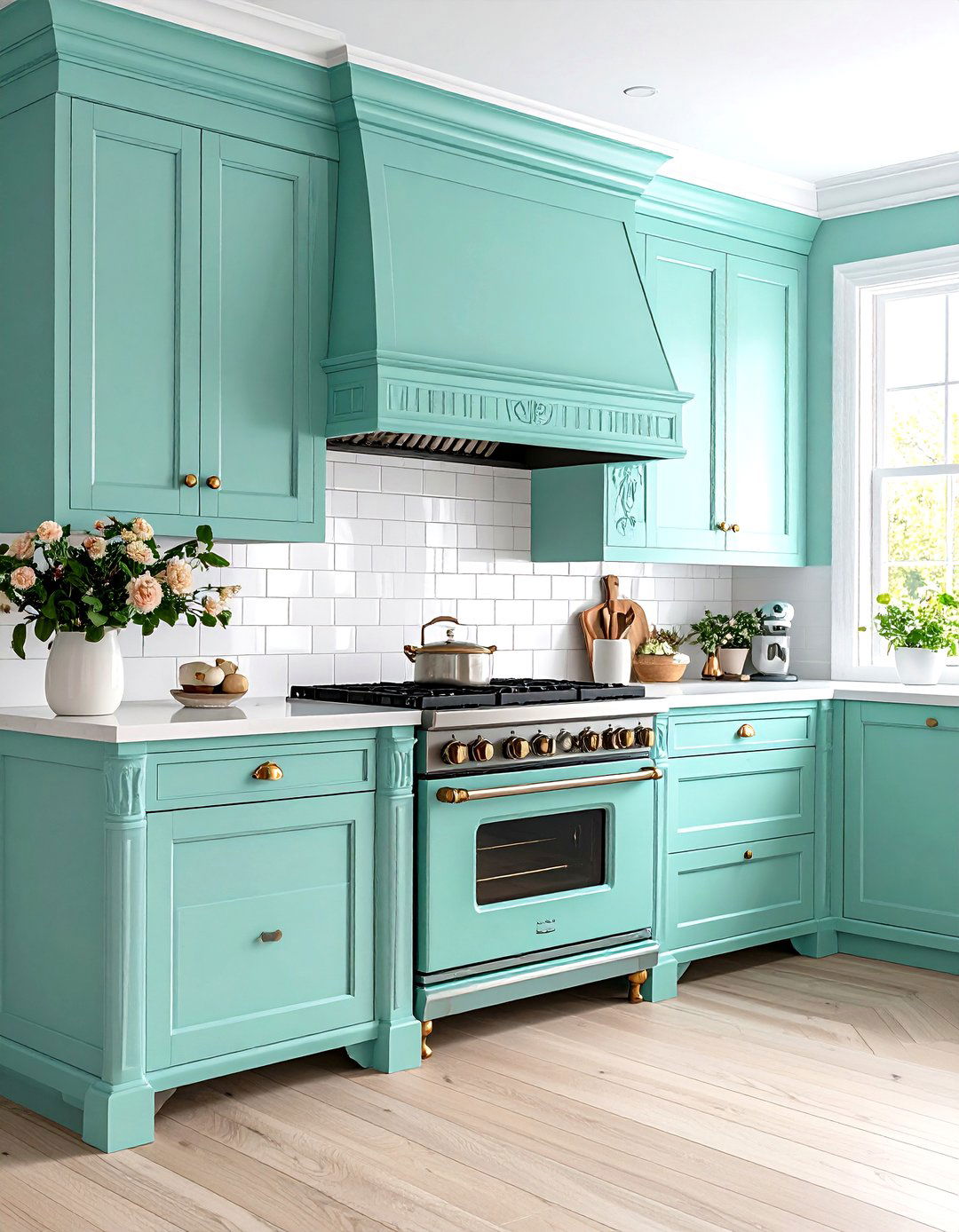
Victorian kitchens often featured enamel-coated cast-iron stoves with ornate legs and trim. Today’s reproductions from specialist manufacturers bring vintage form with modern performance. Freestanding ranges in pastel hues—mint green, powder blue—or classic cream finish serve as focal points against decorative tile backsplashes. The range’s bulk and presence ground the kitchen composition, while double ovens and induction cooktops offer contemporary convenience. Surround the stove with marble countertops and tiled walls to frame it as a showpiece.
10. Clawfoot and Apron-Front Sinks
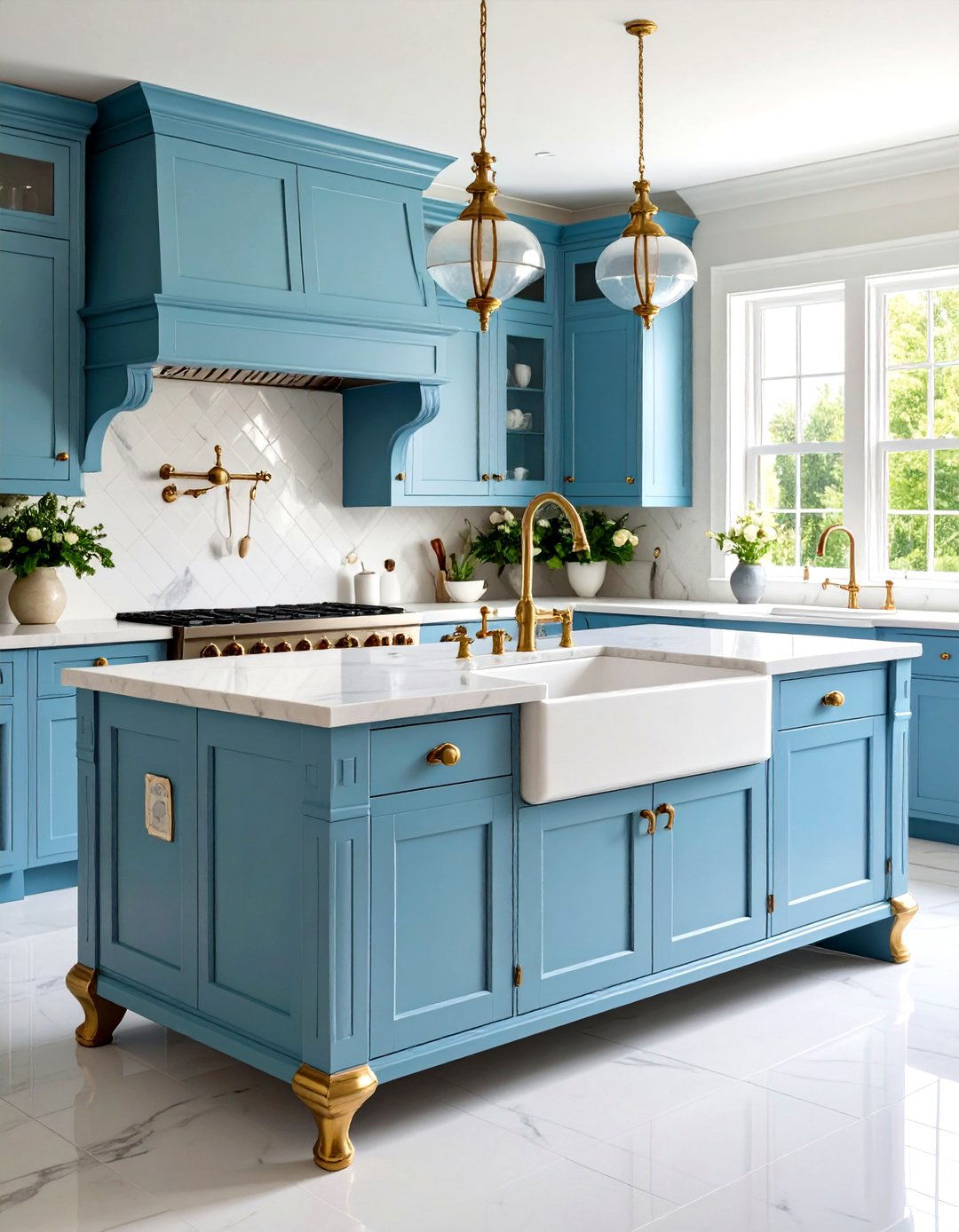
Deep, porcelain-lined clawfoot sinks or fireclay apron-front basins capture Victorian utility and beauty. Clawfoot sinks stand alone on decorative legs, often paired with wall-mounted bridge faucets. Apron-front “farmhouse” sinks integrate into cabinetry, featuring clean lines and sizable bowls. Choose fixtures in polished brass or nickel with cross-handle details to complete the period look. Incorporate a soap shelf or integrated drainboards in matching porcelain for authenticity, and accent the sink area with a beadboard or subway tile splash.
11. Wainscoting and Chair Rails
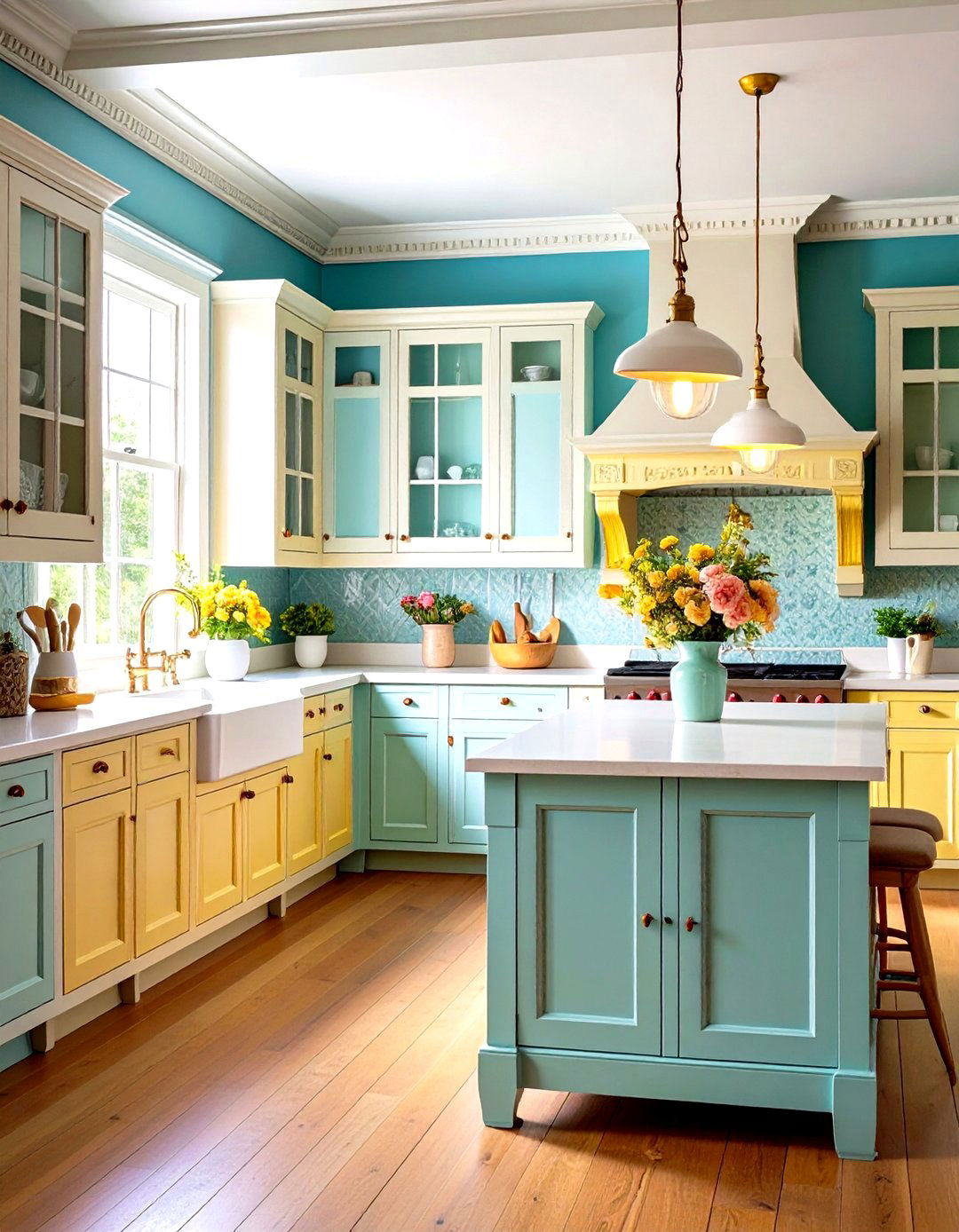
Wainscoting—raised panels or beadboard—protects walls from scuffs and adds architectural depth. In Victorian kitchens, wainscot panels rose halfway up walls, topped by picture-frame moldings or chair rails. Paint wainscoting in a contrasting hue to upper walls to delineate zones and highlight cabinetry color. Beadboard styles lend a cottage feel, while raised-panel wainscoting aligns with formal Victorian taste. Extend wainscoting around windows and door frames for a unified look that seamlessly blends with other millwork.
12. Decorative Molding and Cornices

Elaborate crown moldings and cornices cap the space between walls and ceiling, unifying cabinetry, walls, and ceiling. Dentil moldings, egg-and-dart carvings, and rope twists were period favorites. Install cornices atop upper cabinets to conceal lighting or soffits, and use plinth blocks at door frames to echo cabinet base moldings. Painted in the same color as cabinets or walls, these elements appear integrated, while contrasting finishes highlight their profiles. Decorative moldings transform flat surfaces into sculptural features.
13. Dark Wood Accents

While white and pastel cabinetry have their place, dark mahogany or walnut accents inject depth and warmth. Use wood-tone islands, butcher-block counters, or open shelving in rich grains to contrast lighter surfaces. Dark stained mantels above range hoods or built-in cabinetry panels provide visual weight. Incorporate hardwood flooring in herringbone or parquet patterns to unify wood elements. The interplay of dark wood against marble, tile, or painted surfaces fosters a refined yet inviting atmosphere.
14. Floral Stenciling and Borders

Hand-painted stenciled flowers or vine motifs add artisanal flair to walls, cabinets, or tin panels. Victorian designers often enhanced plain surfaces with stencils, creating delicate borders around ceilings or panels. Modern homeowners can use removable stencils and washable paints to replicate this look on range hoods, cabinet interiors, or backsplash tiles. Select muted pigment shades—sage green, rose pink, or pale gold—to harmonize with broader color schemes. Stenciling personalizes the kitchen with bespoke detailing.
15. Glass-Front Cabinets

Glass-front doors reveal curated collections of glassware, china, or cookbooks, breaking up solid cabinet expanses. Leaded or textured glass panes enhance privacy while diffusing light. Interior cabinet lighting behind glass fronts highlights displayed items and creates ambient glow. For a cohesive Victorian feel, choose mullioned frames or arched glass tops. Position glass-front upper cabinets above countertops or flanking a focal range to showcase treasured pieces without cluttering main prep zones.
16. Enamelware and Copper Displays
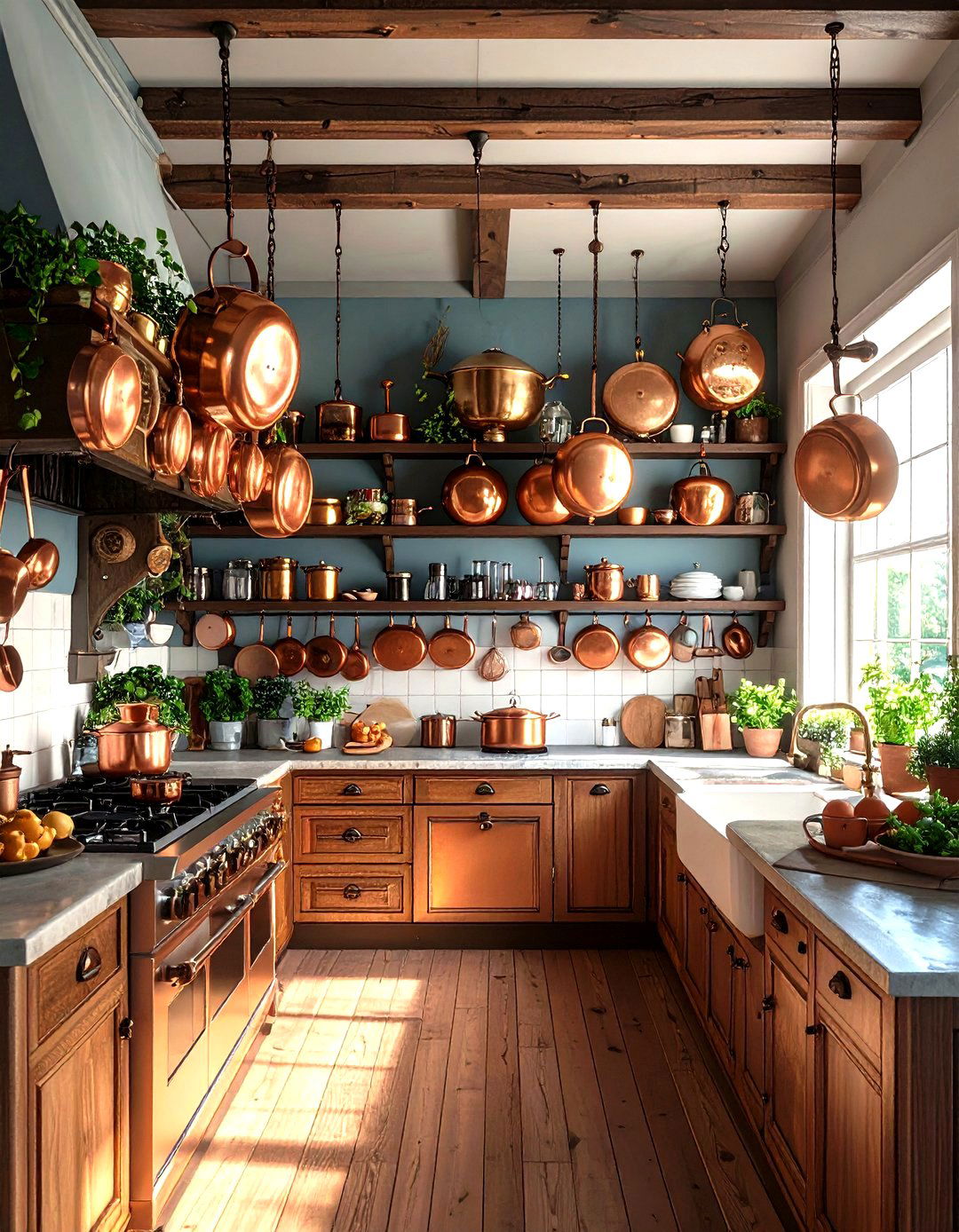
Open hooks or racks for hanging enamel pots, copper pans, and ladles turn functional cookware into wall art. These materials patinate attractively, building character over time. Install a ceiling-hung pot rack or wall-mounted rails above the sink or island. Copper cookware reflects light and adds warmth, while white-trimmed enamelware aligns with painted cabinetry. Such displays are both utilitarian and decorative, offering easy access while reinforcing the Victorian workshop aesthetic.
17. Earthy Color Palettes
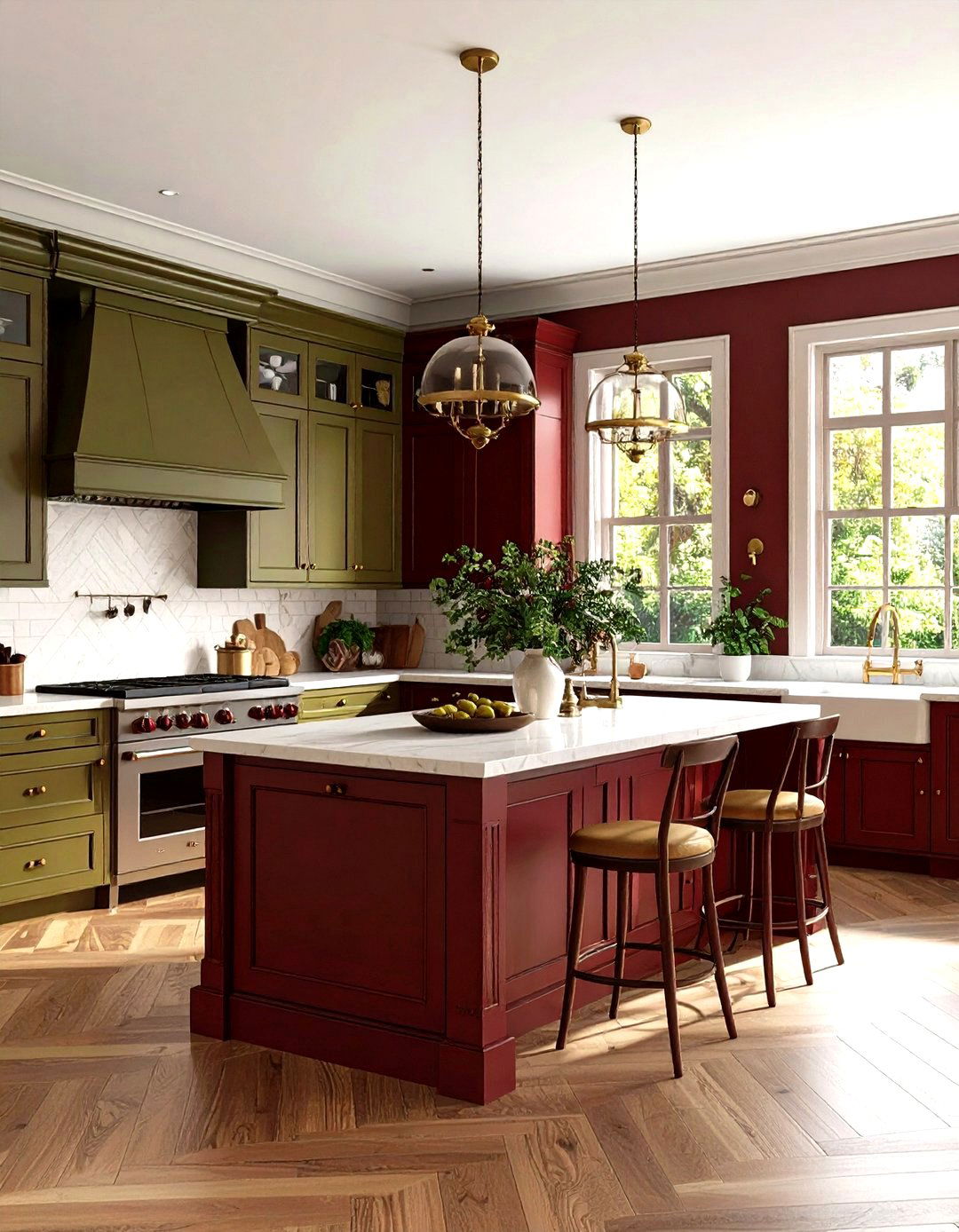
Victorian homes embraced rich, muted hues derived from natural pigments: olive green, burnt umber, mustard yellow, and burgundy. In kitchens, pair dark greens with cream trim or burgundy walls with dark wood accents. Tones inspired by nature create cozy intimacy, and painting the island in a contrasting color injects focal interest. Accent colors appear in tile patterns, wallpaper motifs, or painted moldings. Earthy palettes work in both large and compact spaces, adapting to Victorian romanticism.
18. Patterned Ceramic Tiles
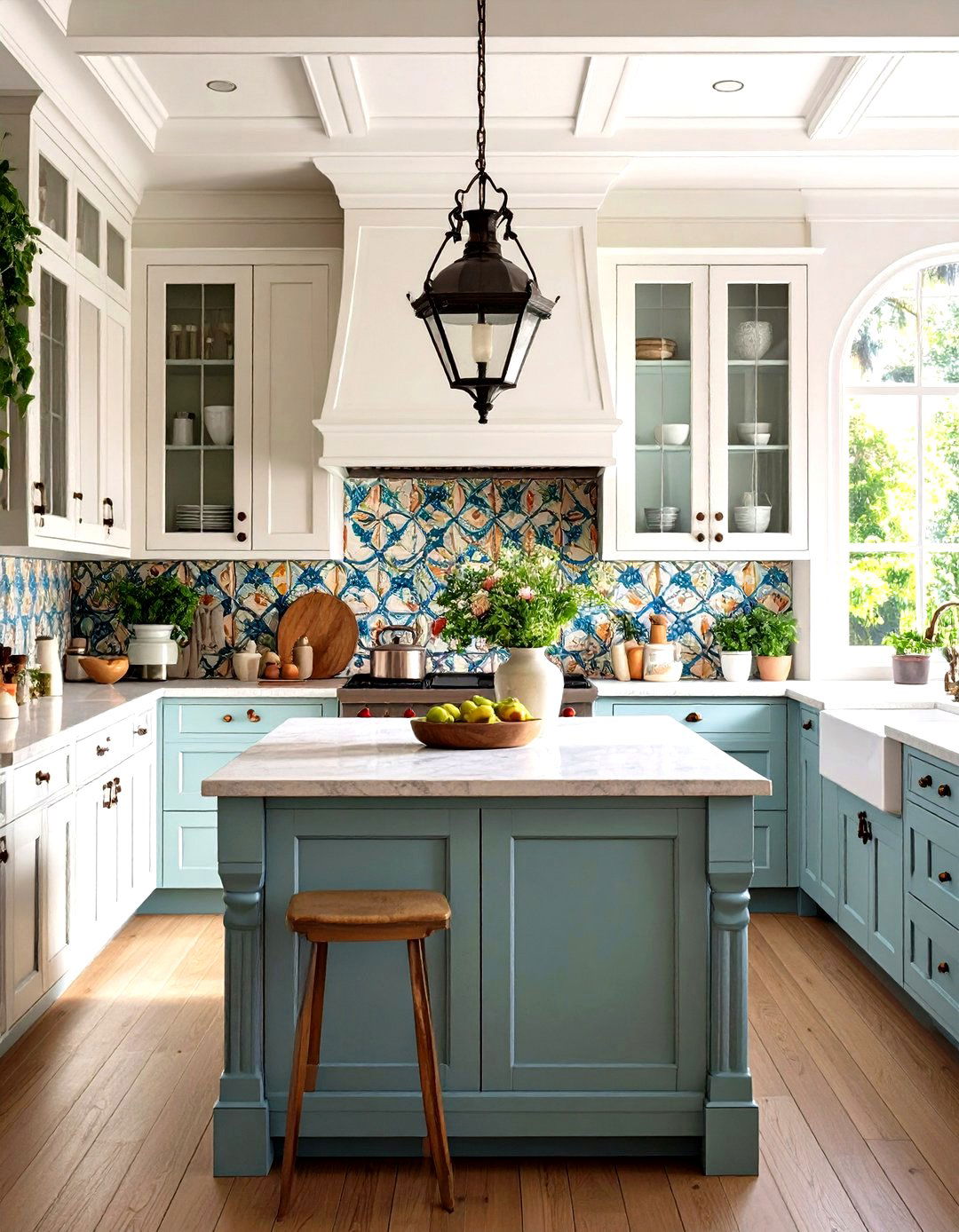
Hand-painted or encaustic ceramic tiles in repeating patterns enliven backsplashes and floors. Victorian tile makers produced intricate floral, geometric, and mosaic designs in vibrant glazes. Modern manufacturers offer replicas of historic patterns—Moroccan-inspired motifs, hexagonal mosaics, or border tiles. Use bold patterns sparingly around ranges or sinks, pairing them with neutral field tiles elsewhere. The tactile, slightly irregular surface of artisan tiles reinforces handcrafted authenticity.
19. Built-In Banquette Seating

An eat-in kitchen nook with built-in bench seating against a window or wall evokes Victorian breakfast rooms. Upholstered cushions in period fabrics—floral chintz or damask—soften wood benches. A round or oval pedestal table complements the curved seating layout, fostering an intimate dining spot. Add decorative wainscoting behind the banquette and a pendant light overhead for a cozy, multi-functional corner ideal for family meals or casual entertaining.
20. Statement Range Hoods
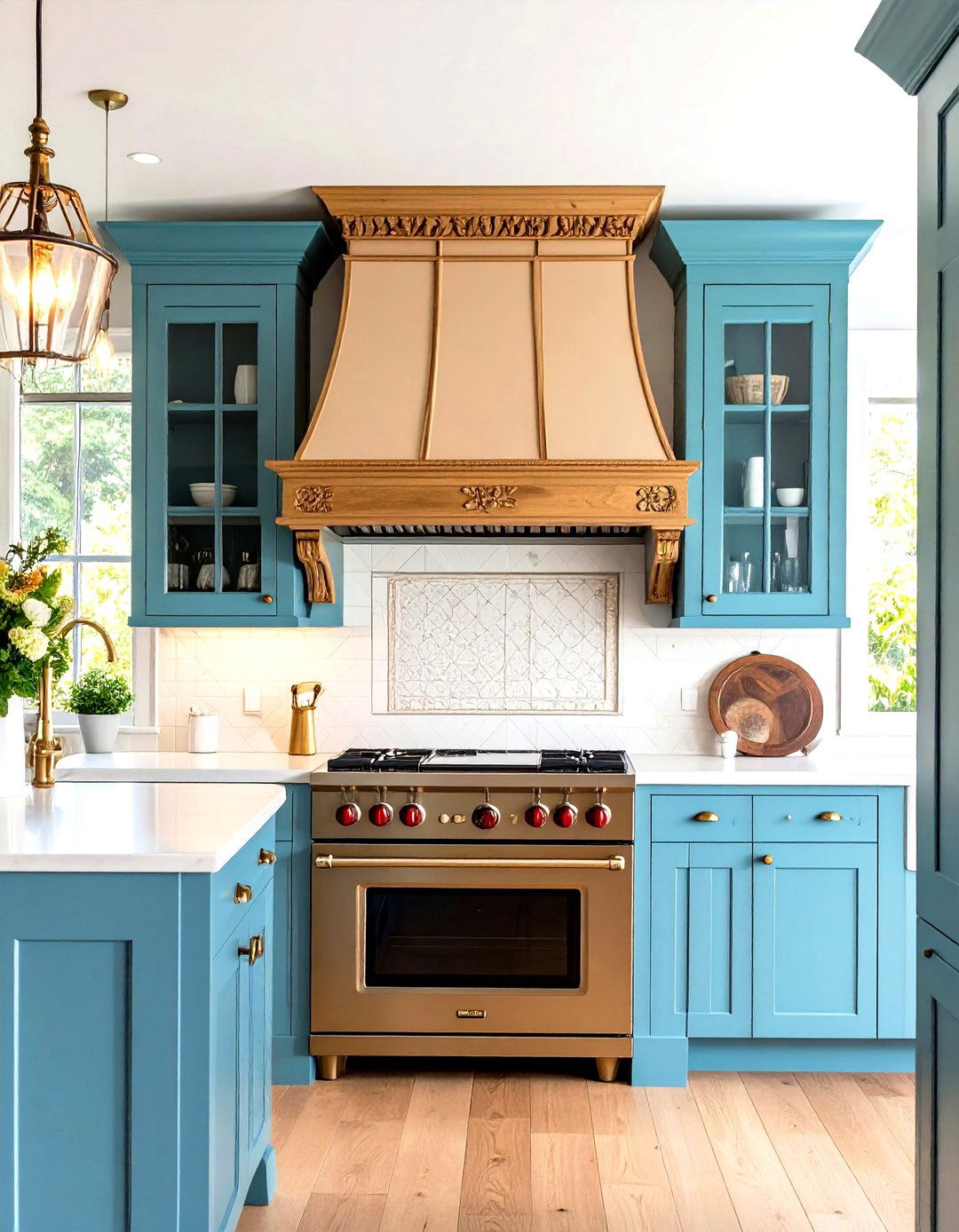
Ornate range hoods served as architectural focal points, often built from wood or copper with carved details. Replicate this by installing a hefty wood hood with pilasters and corbels, painted to match cabinetry or stained for contrast. Back it with a decorative tile or tin panel insert that mirrors ceiling patterns. A well-crafted hood anchors the cooking wall and conceals modern ventilation systems behind period-accurate facades.
Conclusion:
By weaving together ornate millwork, period-appropriate materials, and carefully chosen color palettes, these 20 Victorian kitchen ideas honor the aesthetic of the 19th century while meeting contemporary needs. From the elegance of Carrara marble counters to the warmth of dark wood accents, each element contributes to a cohesive narrative of craftsmanship and style. Incorporating details like tin ceilings, patterned tiles, and vintage fixtures ensures authenticity, while modern appliances and finishes maintain functionality. Whether you’re restoring a historic home or infusing Victorian charm into a new build, these design principles offer a comprehensive guide to creating a kitchen that feels both timeless and thoroughly inviting.




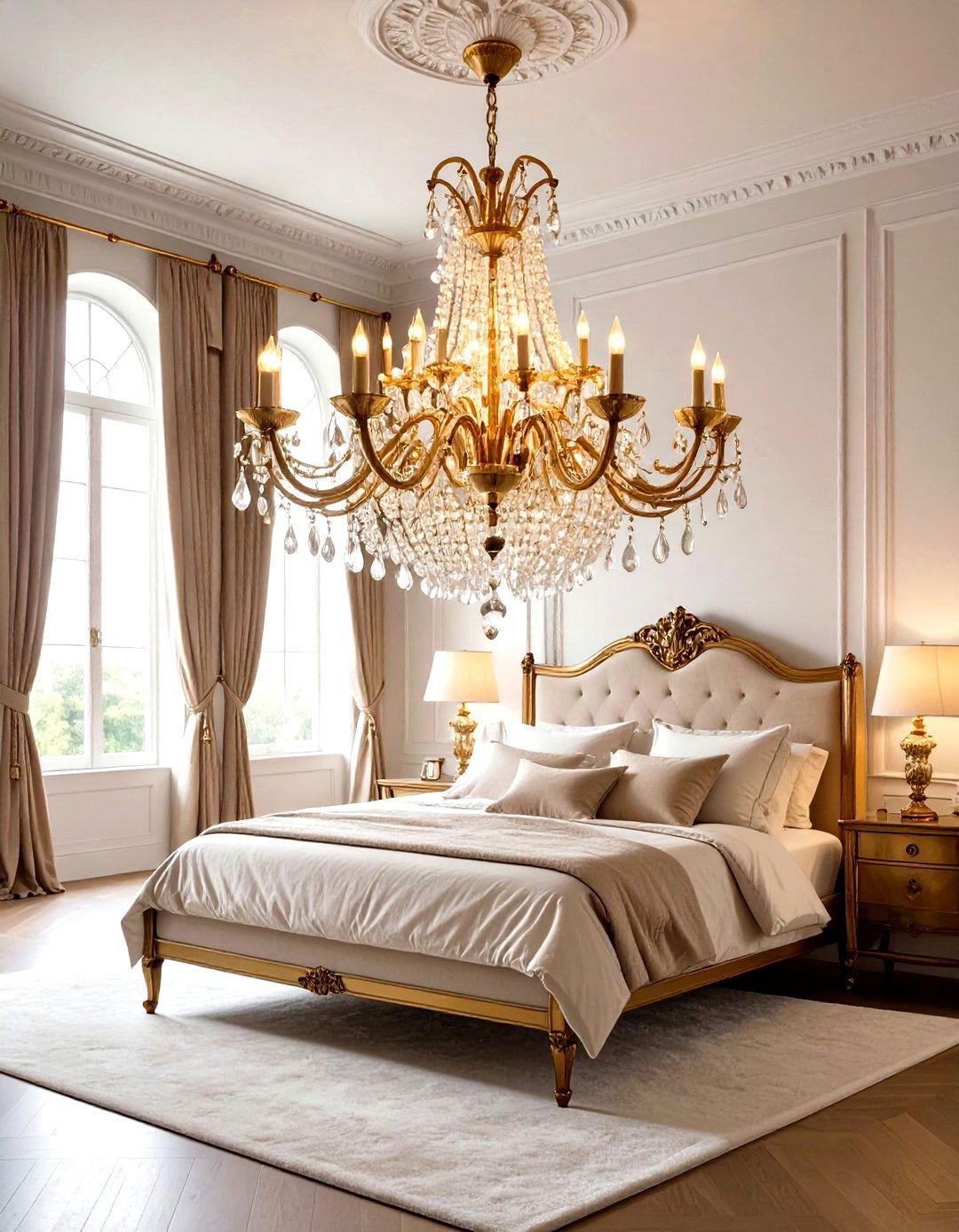

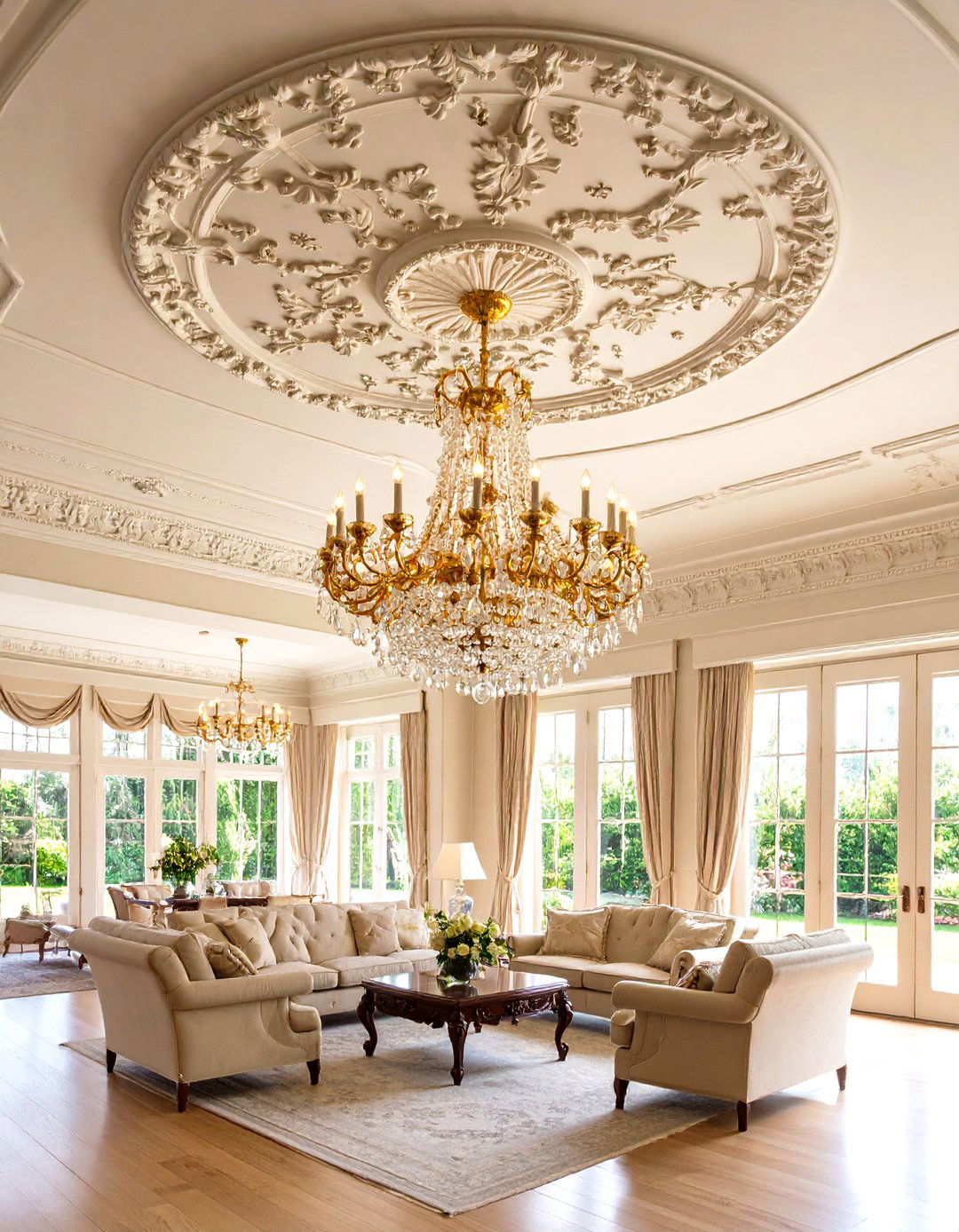
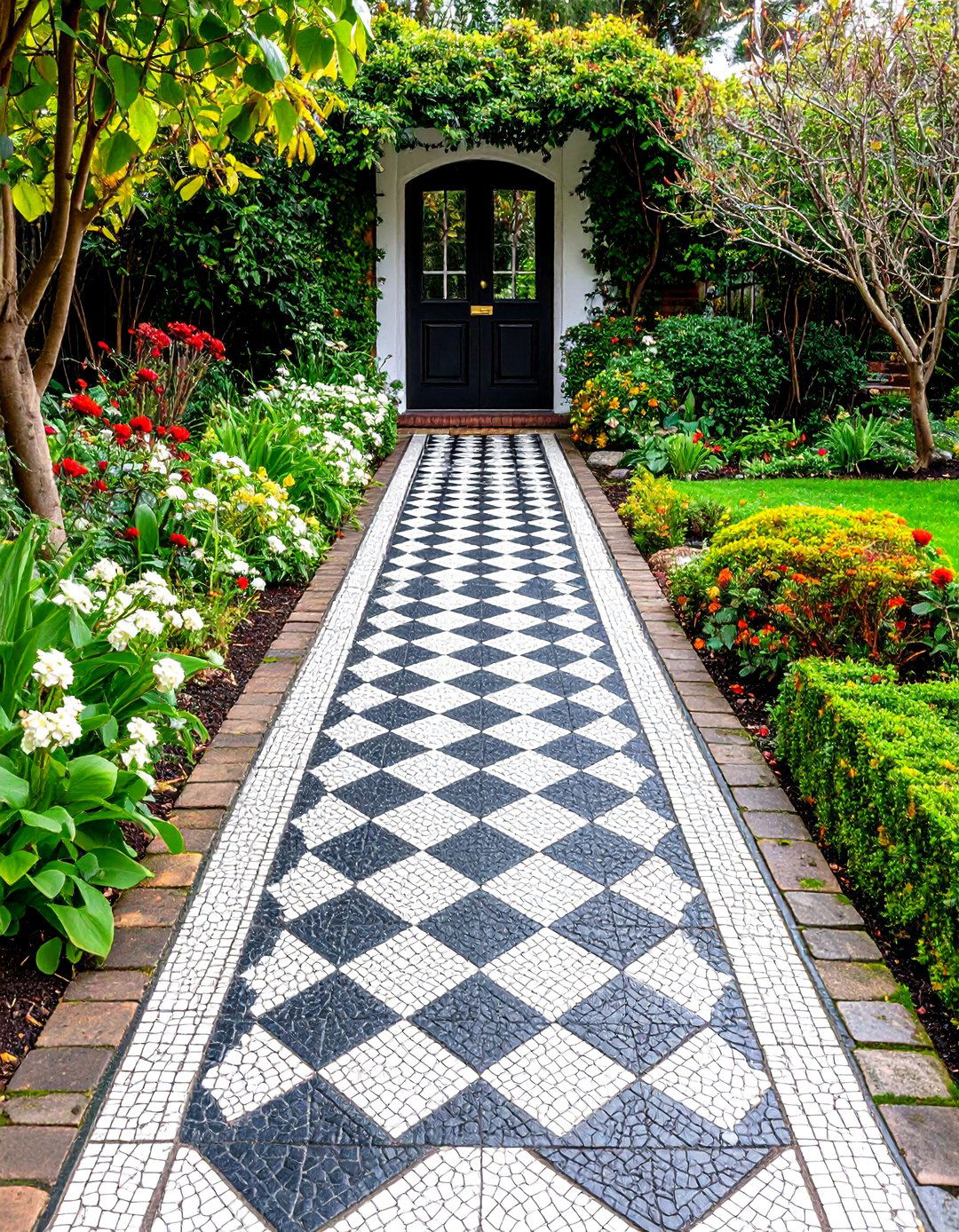
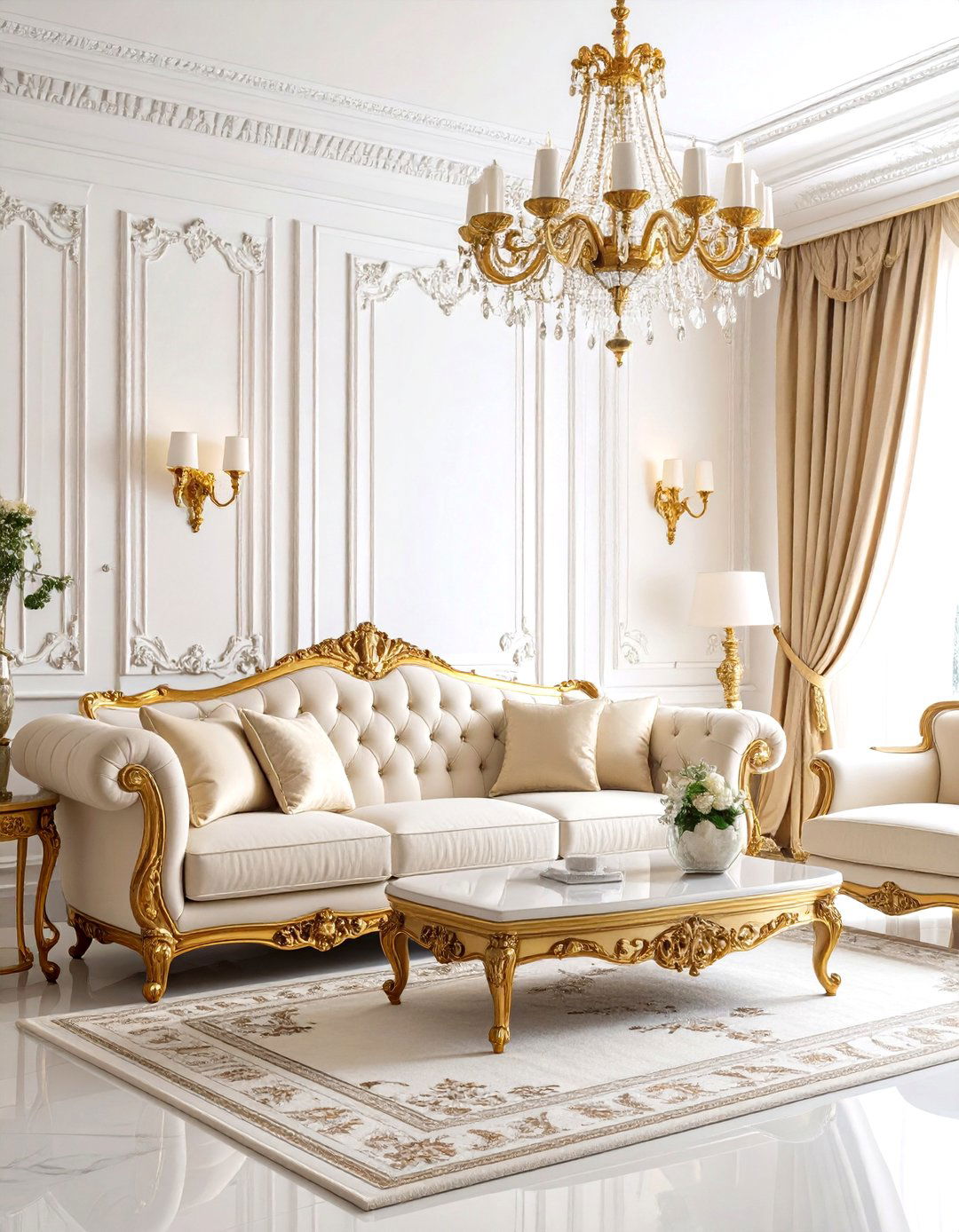
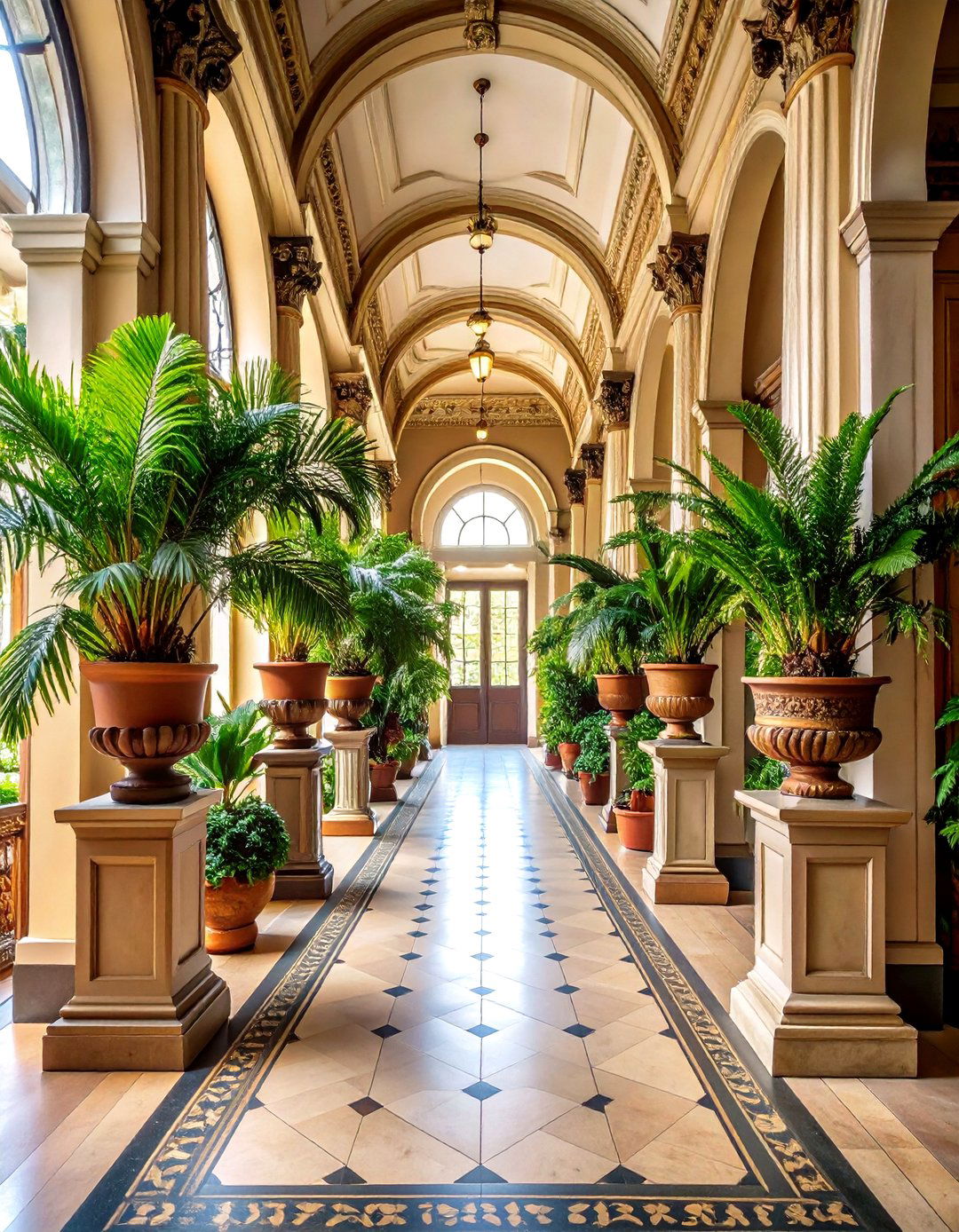

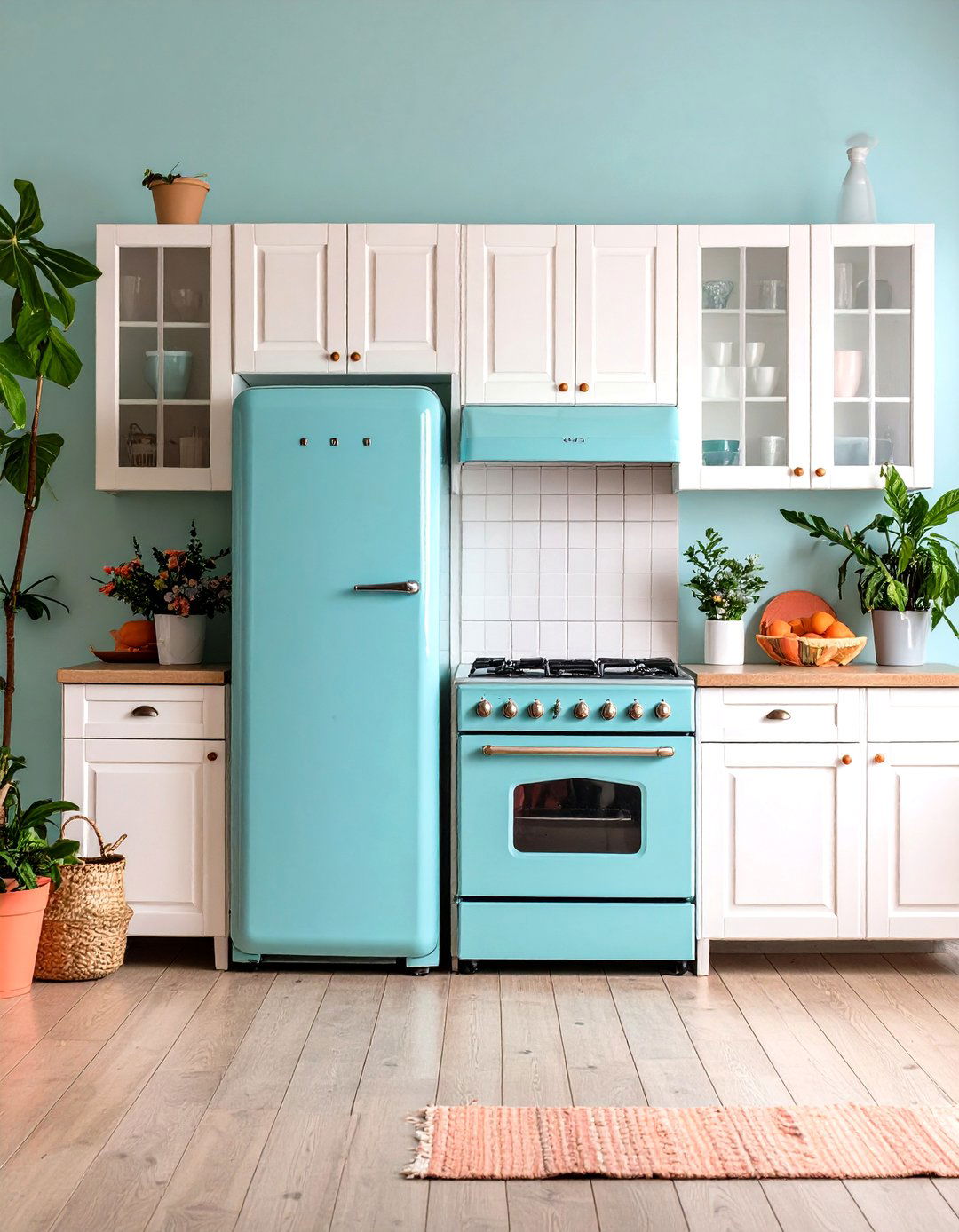
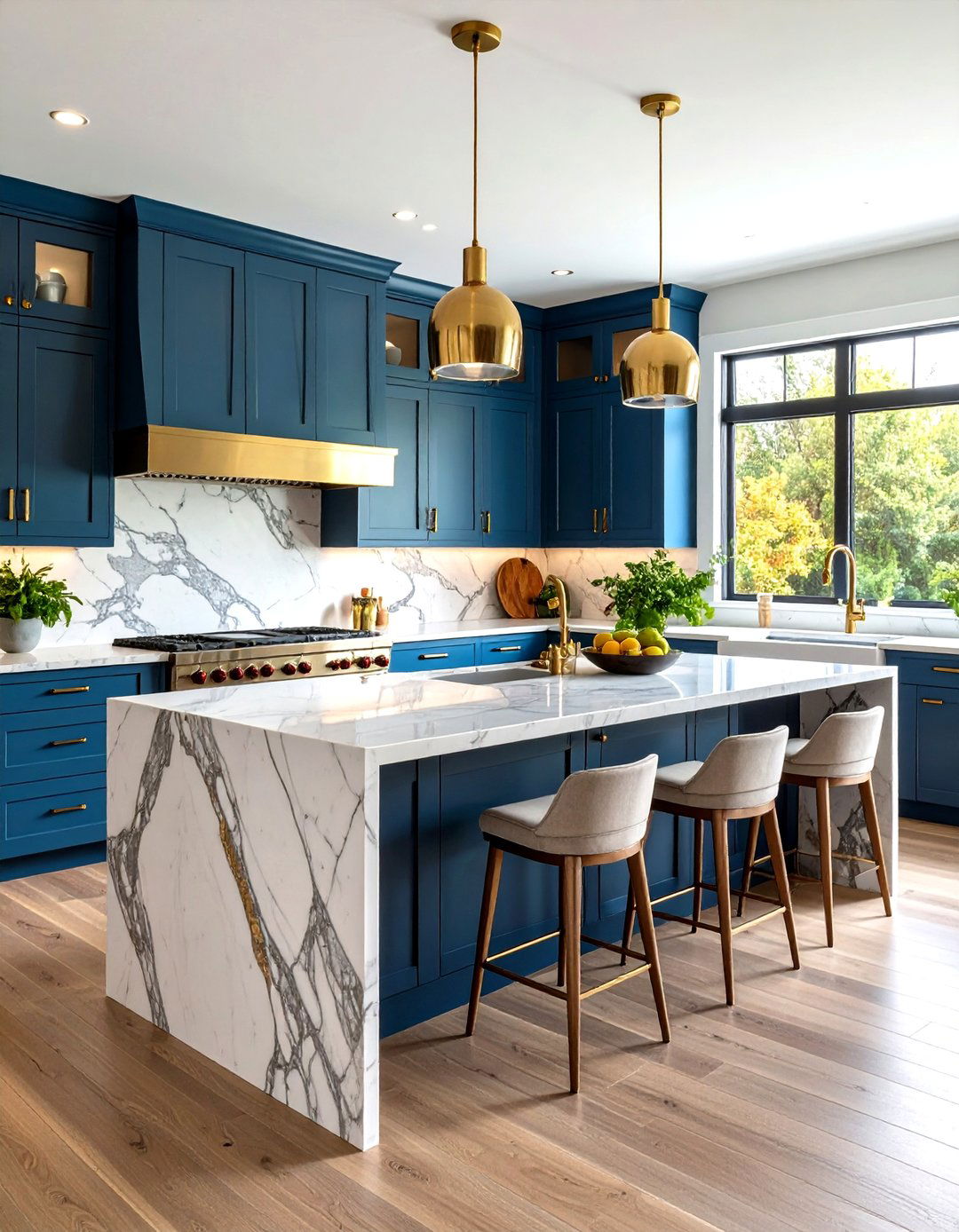


Leave a Reply